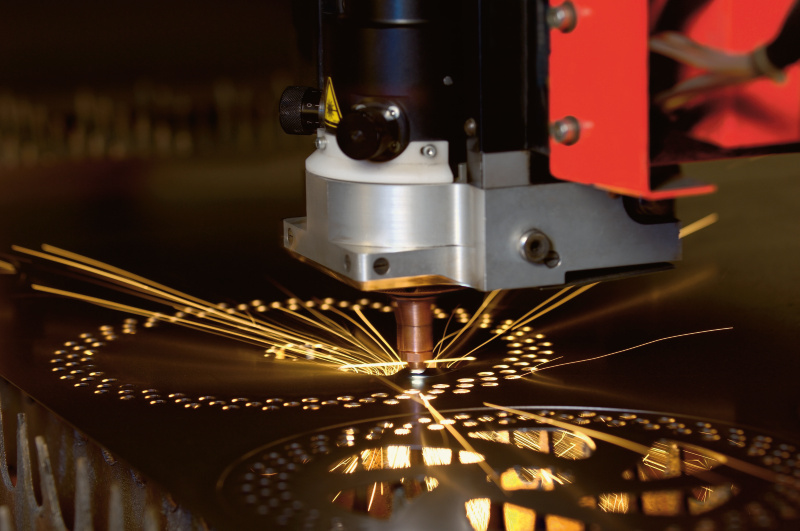 |
| Image courtesy of Bystronic |
The procedure involves a high-power laser beam directed at the material to be processed, that will cut it by melting, burning or vaporizing it, leaving a high-quality surface finish. The materials that can be laser cut include metals, ceramics, plastics and polymer composites.
There are a few different laser cutting methods, adapted for various types of materials.
Vaporization cutting uses the laser to heat the surface material to the boiling point generating a small keyhole which leads to a sudden increase in absorptivity deepening the hole. The generated vapors further erode the molten material enlarging the hole. In general, non-melting materials are cut using this method.
The “melt and blow” method uses high-pressure inert gas to remove the molten material from the cutting area. This method uses less powerful lasers and it uses the gas jet of blow away the molten material without raising the temperature of the material any further. This method is used for cutting metals.
Another method is the thermal stress cracking used especially on brittle materials sensitive to thermal fracture. The laser is focused on the surface creating localized thermal expansion which results in a crack that can be guided by moving the laser.
Unfortunately, the laser cutting or engraving process generates gases, fumes and micron-size particles which are harmful for the operators. The health hazards range from minor skin and respiratory tract irritations to exposure to carcinogen vapors of nickel and chromium for example.
With an annual production of over 80 million tons, polyethylene (PE) is probably the most common plastic. One of the byproducts of exposing polyethylene to the intense heat of a laser is formaldehyde, a toxic volatile organic compound (VOC) and a known carcinogen.
Vapors of metals like beryllium, cadmium, manganese, nickel, vanadium and zinc generated during the laser cutting process are also a major health hazard. Exposure to such vapors could lead to damage to the respiratory tract, kidney damage, emphysema, increased risk of lung cancer, irritation of the eyes, nose and throat, nausea and may include chronic effects on the central nervous system.
Quatro Air Technologies offers high quality fumes extractors and dust collectors to effectively remove the toxic and corrosive contaminants generated during the laser cutting or engraving process.
The fume extractors feature medical grade HEPA filters to remove 99.97% of particles that have a size greater than 0.3 micrometres, and a chemical filter containing up to 40 lbs. (18 kg) of cleaning media for odor and VOC .
The SPH-400, SPH-800, CSA-600 and the LASERPURE Series feature the LaserBlue Gel, Zero Bypass technology which guarantees that no harmful fumes or particles will bypass the filtration system.
Contact us at 1-877-978-2876 to learn more about our fume extractors and dust collectors.